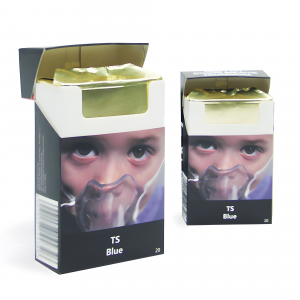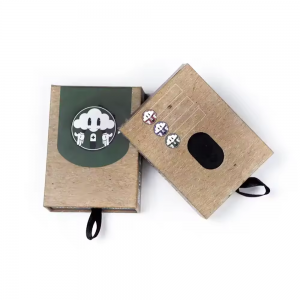Two types of errors of different nature for cardboard cigarette boxes can be compensated by different methods.
System errors have certain changing rules. After identifying their size and direction, they can be solved by adjusting or overhauling equipment. For accidental errors, there seems to be no regularity on the surface. However, using mathematical statistics methods to find out the general pattern of packaging errors for a batch of packages
(1) Determine the quality limit AQL. The manufacturer and user negotiate to determine the acceptance quality limit and write it into the technical specification or order contract. In principle, the acceptance quality limits are stipulated separately according to the unqualified classification. The reception quality limit specified for Class A is smaller than the reception quality limit specified for Class B, and the reception quality limit specified for Class C is larger than the reception quality limit specified for Class B. In addition, we can consider re-stipulating some or individual unqualified items in the same category, or we can consider re-stipulating the receiving quality limit between different categories. Acceptance quality limits are expressed as the number of failures per 100 packaged products. For example, the acceptance quality limits for corrugated boxes are: 1.0 for Class A, 4.0 for Class B, and 6.5 for Class C.
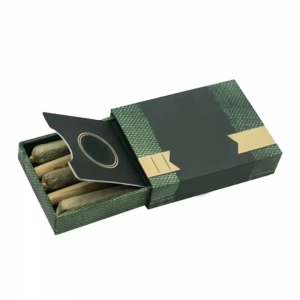
(2) Determine the sampling plan, that is, the sample size and the number of acceptances and rejections according to the type of sampling plan. GB/T 2828.1-2003 provides normal, strict, and relaxed primary and secondary sampling plans. This is so that the strictness of the plan can be changed in a timely manner according to changes in quality, and a more satisfactory sampling effect can be achieved with a smaller sample. Table 8-10 is a sampling plan for normal inspection for reference.
(3) Take samples and inspect the samples.
(4) Determine whether the batch-by-batch inspection is qualified or unqualified, and make a post-inspection disposal plan. 2. Inspection examples
Inspection of a certain packaged product in batches of 10,000 pieces is carried out in accordance with GB/T2828.1-2003 “Batch-by-batch inspection sampling plan retrieved by acceptance quality limit (AQL)”, and general inspection level II is adopted. Use the normal inspection one-time sampling plan, and check the sample size code from Table 8-9 to L; then check the sample size from Table 8-10 to 200, and randomly select samples. According to the three categories of receiving quality limits: Category A is 1.0, Category B is 4.0, and Category C is 6.5. It can be seen from Table 8-10 that the row with sample size code L and AOL=1.0, 4.0, 6.5 At the intersection of the columns, read [5,6], [14,15], [21,
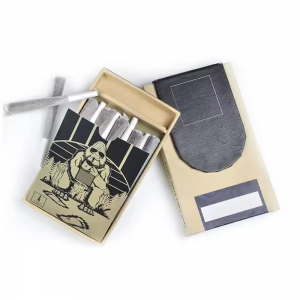
It is the number of rejected products in three categories for cardboard cigarette boxes: A, D, and C.
If the number of defective products in the sample is greater than or equal to the number of defective products, it does not equal the number of defective products. For example, if 2,000 products are taken from the production line for inspection, and if the number is found to be 5, then this batch of packaging products is determined to be unqualified.
3 products were unqualified in Category A, 4 products were unqualified in Category B, 2 products were unqualified in Category A and B, 3 products were unqualified in Category B and C, and 5 cardboard cigarette boxes products were unqualified in Category C. Then the number of unqualified products in Category A, Category B and Category C are 79 and 8 respectively, and the total number of unqualified products is 24. The number of unqualified products in categories A, B, and C is 7, 7, and 5 respectively, and the total number of unqualified products is 19.
When the number of unqualified products reaches the rejection number, whether this batch of packaged products will be rejected requires detailed analysis. Sometimes it is necessary to adopt a compromise approach, such as accepting but warning that corrective measures are required, or rejecting but agreeing to receive it after classification or reprocessing.
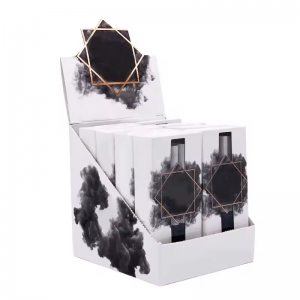
Implementation of cardboard cigarette boxes packaging quality inspection
cardboard cigarette boxes Packaged products need to be quality controlled during the production process, and the machinery and equipment must be adjusted based on the information obtained to keep the specified quality characteristic values within the required limits. After receiving the packaged products, users must conduct quality inspections to determine whether they are Comply with manufacturing technical specifications and check for obvious damage during transportation.
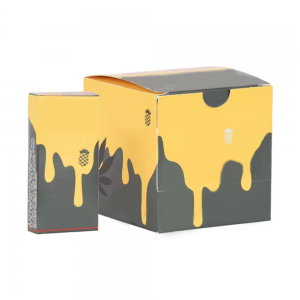
(1) Quality inspection work content Inspection is the basic right of users to receive products. It can be full inspection or sampling inspection. The basic contents of the inspection work are: ① Formulate technical specifications for cardboard cigarette boxes packaging products. ② Develop evaluation criteria. ③ Use credible inspection tools and inspection methods. ④Record inspection data. ⑤ Put forward suggestions for processing the inspection results. ⑥Submit inspection data and suggestions to the quality management department.
(2) Specific implementation of quality inspection
The specific quality inspection of various cardboard cigarette boxes packaging products is different. Here we take the quality inspection of glass bottles and jars, folding cartons, etc. as an example. Other products can be used as reference.
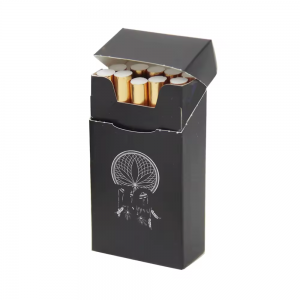
1. Glass bottles and jars
(1) Technical specifications for glass bottles and jars
①Shape. The basic shape of glass bottles and jars mainly depends on the type and quantity of items they contain. Once the bottle shape is determined, a working drawing should be drawn to show the container’s appearance. Usually represented by three views, partial enlarged views, and additional three-dimensional views. ②Size. Important dimensions of glass bottles and jars should be noted on the working drawings, with tolerances given, and other items such as capacity or capacity should also be included. Dimensions and tolerances must be negotiated with the manufacturer because the manufacturer’s bottle-making machines have fixed heights and diameters, which often limit the shape and size of bottles and cans. Commonly used bottle making machines generally limit the height of bottles and cans to 25~300mm. The diameter of bottles and cans is related to the number of bottles and cans produced on one machine section, and its diameter is between 12 and 150mm. ③Tolerance. Glass bottles are affected by some factors during the molding process, causing some differences in shape and size. Therefore, an acceptable range of variation or tolerance must be given to the size of the bottles. Standard tolerances apply to volume (mL), mass (kg), height (mm) and diameter (mm). The capacity tolerance of small bottles and cans is 15%, and the capacity tolerance of large bottles and cans is less than 1%. The capacity tolerance of various bottles and cans is between these two limits. The mass tolerance is roughly 5% of the specified bottle mass, and the height variation range is 0.5% to 0.8% of the total height. For vials with a minimum diameter of about 25mm, the diameter tolerance is 8%, for bottles with a maximum diameter of 200mm, the tolerance is 1.5%, and for other bottles and cans, the tolerance is between these two limits.
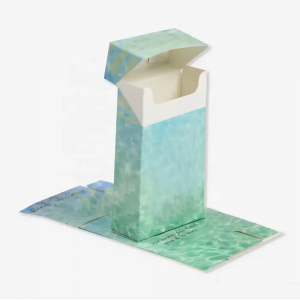
2. Folding carton
②Indentation line. The indentation lines should be uniform and of a certain depth so that the carton can form a straight outline and a clear folded shape. When the carton is folded and flattened to 180°, in order to minimize cracks on the creasing line, a creasing knife with clear wheels should be used to crimp the line, and the carton folding cutter should be aligned with the center of the creasing line on the box surface. All die-cut edges should be clean and flat
All areas that require indentation must be pre-pressed to ensure normal production on the packaging. ③Flatness. The cartons should be flat, without deformation or warping, separated from each other, or stuck together. ④Clean up. Clean and scrub the cartons before packaging to remove dust and waste left by die-cutting on the surface of the cartons.
⑤Printing. The printing on the carton should comply with color standards and ensure that the graphics and text are coordinated and beautiful. ⑥Food and drug management regulations. cardboard cigarette boxes Packaging used in production should not contain any migrating substances exceeding the limits set by the food and pharmaceutical authorities and their subordinate departments.
Confetti.⑦Packaging and sales. Printed cartons must be packed in accordance with regulations. They can be packed in corrugated boxes and sealed with tape, or they can be stacked on pallets and wrapped with stretch wrap or shrink wrap. Each packaging unit should indicate the manufacturer, number of cartons, type and size of cartons, date of manufacture and batch number, etc.
⑧Storage and loading and unloading. Cartons should be stored in a clean place at room temperature with a relative humidity of 40% to 60%. Cartons containing cartons must not be stacked on their sides, and should not be placed near radiators or other heat sources, or placed where they are easily damaged. On damp floors. When taking out cartons, follow the principle of “first in, first out” and open as many as you use.
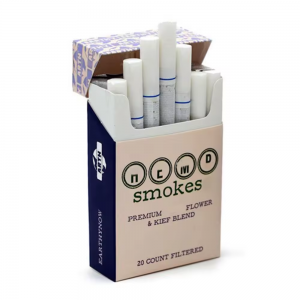
(2) Classification of unqualified corrugated boxes
① Category A is unqualified. It prevents the carton from containing products and prevents printing and marking on the carton.
a. The opening force or rebound force of the carton is too large.
b. The dimensions exceed the tolerance specified in the structural design drawings.
c. The carton is damaged, has holes or scratches, causing the printed pattern to be scratched or blurred.
d. There is an error in one or several printed colors.
e. The printing colors are not registered, causing the pattern to be blurry.
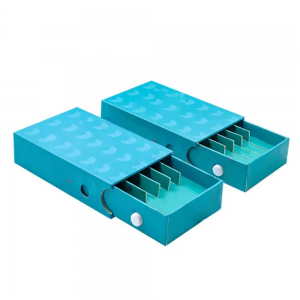
The indentation is misaligned and cannot be formed, filled and sealed during cardboard cigarette boxes packaging production.
② Category B is unqualified. The carton is barely usable or looks of poor quality.
a. The printed pattern has stains or scratches on the surface, exposing cardboard or chalky paint.
b. Incomplete or insufficient indentation makes it difficult for the carton to be formed on the packaging production line, resulting in reduced packaging efficiency. c. When the automatic bottom-locking flap is closed, the socket is not opened properly d. Easy-to-open holes on the side of the carton are punched. Not suitable.
③Category C is unqualified. It only affects the appearance but not the use.
a. The printing surface is rough and the polishing quality is poor.
b. The printing color is slightly standard.
The above unqualified receiving quality limits are: Class A 0.4; Class B 1.0; Class C 2.5.
(3)Carton inspection Effective quality control and inspection should be carried out in the carton manufacturer to ensure that it meets the technical specifications. If an entire batch of goods does not meet the requirements due to poor carton performance, the manufacturer’s quality management department has the right to request re-inspection.
In modern society, although making cardboard cigarette boxes, people have established the concepts of environmental protection and sustainable development.
Packaging must have environmentally friendly properties that are pollution-free and easy to handle. The general trend of world economic development is the scientific development concept of people-oriented, comprehensive, coordinated and sustainable development. It is necessary to ensure that economic growth is coordinated with population, resources and the environment, and that equal emphasis is placed on economic development and environmental protection. Economic growth should be based on the carrying capacity of resources and the ecological environment, with the purpose of building a conservation-oriented and environmentally friendly society. People’s new concept of “sustainable packaging” has been formed. “Sustainable packaging” requires optimizing materials and energy to be considered in packaging design, packaging performance and cost to meet market standard requirements, and the use of regeneration in cardboard cigarette boxes packaging manufacturing, transportation and recycling processes. Energy, maximum use of renewable and recyclable materials, high-efficiency recycling, providing valuable raw materials for recycled products, benefiting individuals and groups during the cardboard cigarette boxes packaging life cycle, and ensuring safety and health. It is consistent with the concept of circular economy, that is, it takes the efficient utilization and recycling of resources as its core and takes “low consumption, low emissions, and high efficiency” as its basic characteristics. It is an alternative to “mass production, mass consumption, and mass waste”. A fundamental change in the traditional resource growth model. The packaging industry should adapt to the needs of the development of circular economy. Packaging contains a new definition, which is called “green packaging”
Post time: Apr-17-2024


